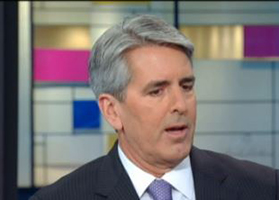Trending
The goal of easing credit requirements for loans is still elusive
Some lenders not following through on vow to give OK to applicants with below-average scores

Federal housing policy makers and mortgage lending groups have been talking about expanding access to home loans for greater numbers of credit-worthy buyers for more than a year. They call it “opening up the credit box” and insist that it’s an important goal.
So how’s it going? Not so great. Though there are a few, scattered hints of easing credit requirements, the numbers aren’t impressive.
Take credit scores. If the lid on the box had opened even a crack, you’d expect to see the change reflected in the average credit scores on closed mortgages extended to home purchasers.
Yet according to the latest data compiled by Ellie Mae, a technology company that examines a massive sample of mortgage transactions every month, there’s been little change in the average FICO credit scores of buyers getting funded. Lenders may say they’re willing to approve loans to applicants with lower than average scores, but they’re not necessarily following through and doing it.
The average score for conventional loans closed in December was 754, just one point lower than in December 2014. Conventional mortgages are those eligible for sale to the two giant mortgage investors, Fannie Mae and Freddie Mac. FICO scores run from 300 (abysmal) to 850 (pristine.) Average scores at the government’s main mortgage source for young and minority first-time buyers — the Federal Housing Administration (FHA) — actually rose to 688 in December, 7 points higher than they were the same month the year earlier. That looks like a tightening of the lid, not an opening.
To put this into context: The average FICO score for Americans is just 695. Young, prospective first-time buyers — millennials in their 20s and early 30’s — tend to have lower scores on average than other age groups. According to a report from FICO last year, nearly 53 percent of millennials have scores below 670. Just 25 percent of them score between 670 and 739. No wonder first time buyers are missing in action, accounting for just 30 percent of all home purchases instead of the historical norm of around 40 percent.
It’s the same picture when you look at two other key criteria: debt-to-income ratios and down payments. Debt-to-income ratios (DTIs) weigh your monthly income against your total monthly recurring payments for credit cards, auto loans, student loans, etc., plus the mortgage you’re seeking. If your total monthly debt ratio is too high, lenders figure you’re more likely to default on your loan. Federal rules specify a 43 percent maximum debt ratio as acceptable for “qualified mortgages.” Yet the average ratio for conventional loans in December was 35 percent, just 1 percent more generous than the average for all of 2014. FHA’s average in December was 41 percent, the same as it was a year earlier but 1 point higher than it was in November.
Down payments haven’t budged much either. The average conventional home purchase borrower made a down payment of 20 percent in December — slightly more than it was last spring. At FHA, where low down-payment requirements have always been the marquee attraction, the average was 5 percent, slightly higher than earlier in the year when it was just 4 percent.
On the plus side, both Fannie Mae and Freddie Mac introduced new 3 percent down-payment programs last year, and they are beginning to pull in some buyers. Freddie Mac CEO Donald Layton said the new Home Possible Advantage program is “exceeding our targeted expectations” but did not provide actual numbers of loans closed to date.
So what’s going on here? Brad German, a spokesman for Freddie Mac, noted in an email that during the past year the company had offered “a steady expansion of credit terms for mortgages we are willing to buy from lenders,” including the 3 percent down plan. But, he added, “we cannot force lenders to make or sell loans to us,” even when they’d have the effect of expanding access to more borrowers.
David Stevens, CEO of the Mortgage Bankers Association, had a different take: He argues that Fannie’s and Freddie’s automated underwriting systems continue to impose high fees on borrowers with low FICO scores and down payments. Stevens also criticized the Justice Department for effectively discouraging participation in FHA’s low down-payment loans by demanding huge financial settlements and filing lawsuits against lenders who make even the most minor errors in underwriting or documentation.
Bottom line: There’s plenty of finger-pointing going on, but not much opening of the credit box.




